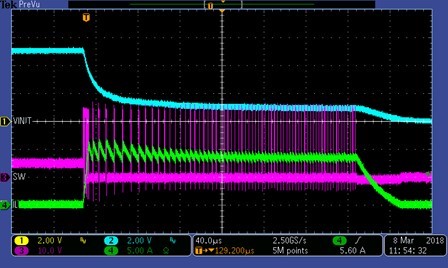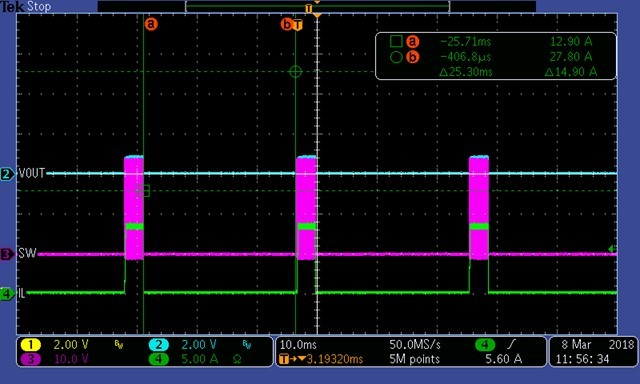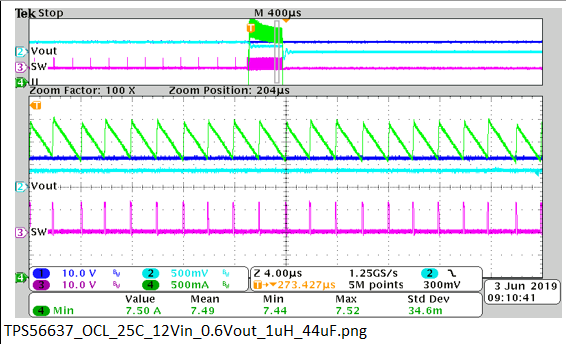Hi Team,
When checking over current protection of TPS56637, it seems that TPS56637 gets unexpected behavior as attached(See here).
Have you seen this issue before?
[Experimental setup]
- Output is set to 0.6V or 0.9V
- Load current was slowly ramped up by CC mode electric load to OC threshold
- After TPS56637 gets OCP, voltage was drop and got the issue(Large ripple and draw current limited to 2~3A)
TPS56637 can no longer draw a large current until I drop Vin below UVLO.
Regards,
Takashi Onawa




